
As congestion woes and driving confusion carry on to the annoyance of motorists caused by the perplexing design of the new intersection of Pakūranga Road and te Rā Hihi Flyover, PJ TAYLOR picks up on another angle frustrating road users – three speed limits over a patch of less than 800 metres and, why is there no median barrier? And AT continues to develop its plan to rectify intersection issues.
The speed limit on Pakūranga Road is now back to 60kph, reversed in March this year from 50kph to the jubilation of locally elected members and motorists.
The speed limit on the new $152 million Rā Hihi Flyover, which is also a section of the South-Eastern Highway, is 50kph.
And the speed limit on the South-Eastern Highway is 80kph.
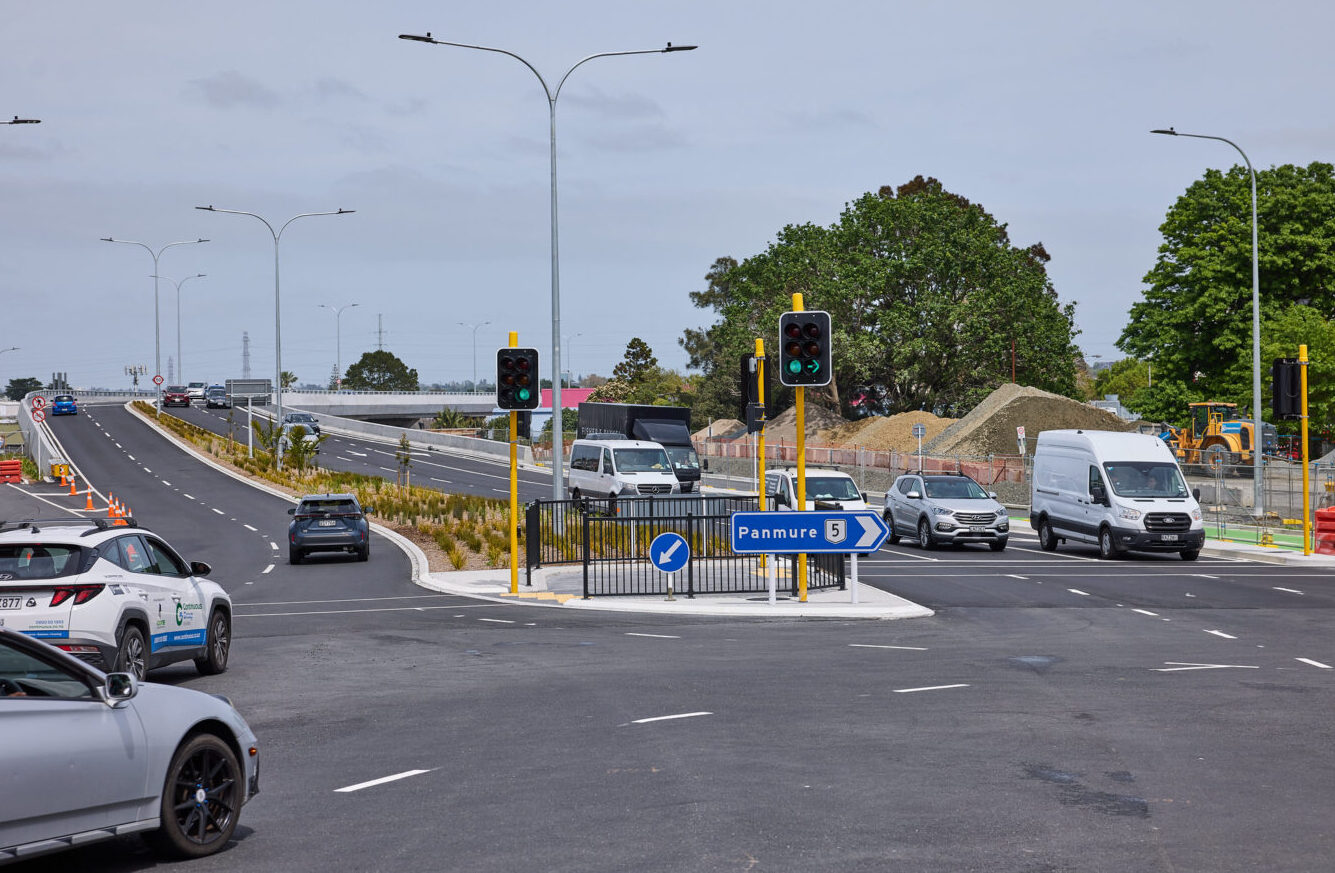
With the flyover 600 metres in driving length, it means motorists are having to contend with three different speed limits within a distance of about 800m, give or take a few metres at junctions and merger lanes.
Here lies the annoyance, as Times’ reader Andrew Dyer of Howick explains: “The imposition of a 50kph limit on the flyover makes no sense at all.
“It’s a dual carriageway road which has presumably been constructed to the latest safety standards.
“When Pakūranga Road has a 60kph limit where there are far more risks present for both motorists and pedestrians, it’s absurd to have a lower limit on the new flyover,” says Dyer.
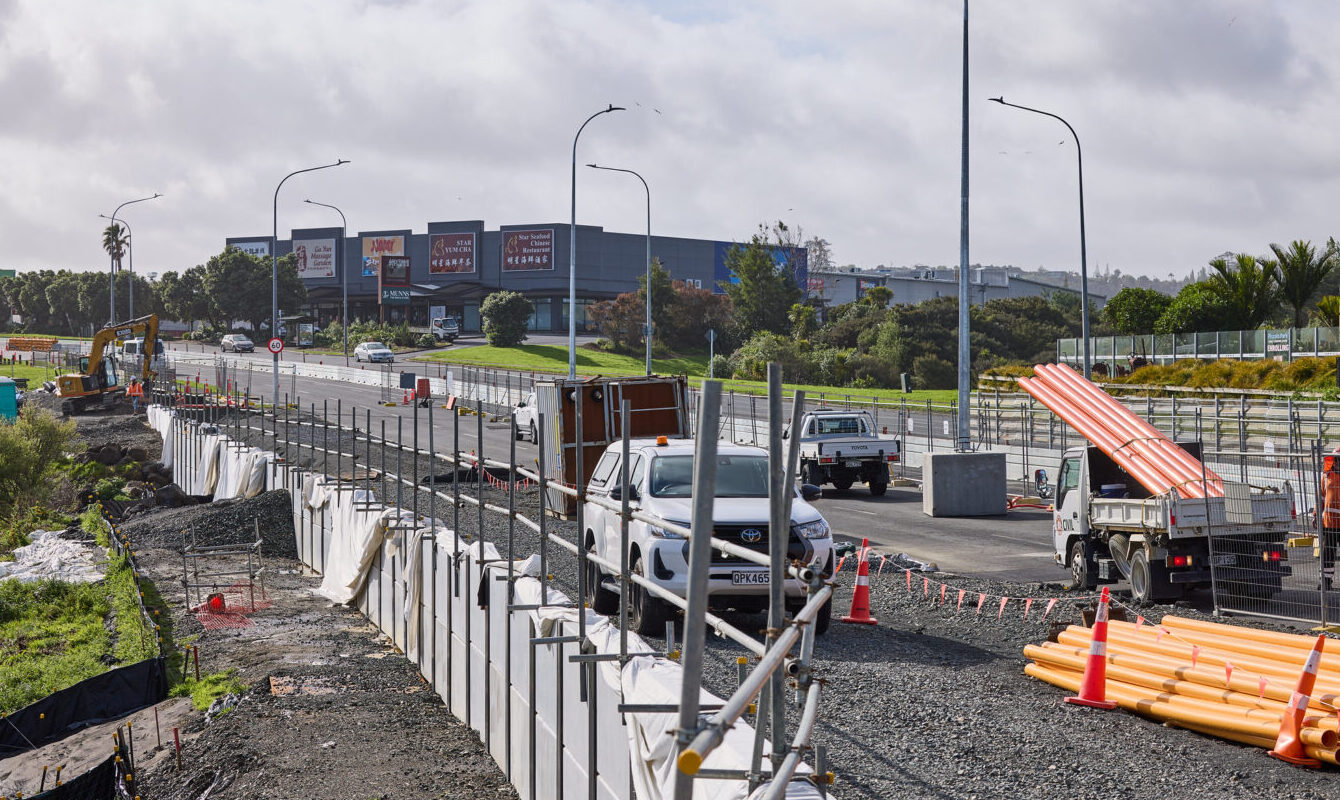
Another reader responding on social media to earlier Times’ flyover stories, also sums up the feeling of many: “I still don’t get the logic where the speed on Pakūranga Road is 60kph, and the South-Eastern Highway is 80kph, and yet the flyover is 50kph.
“It effectively reduces smooth travelling and clogs up both directions. A smarter way is to keep the same speed as 60kph so the merge at the end can be smooth, and commuters can smoothly increase speed to 80kph. This can help lessen the backlog of traffic at both ends.”
Responding to Times’ questions, an Auckland Transport (AT) spokesperson says: “The flyover was built for a speed limit of 50kph to enable safe travel that considers the flyover’s curves, ramps, and gradients.
“It was also designed at a time when Pakūranga Road’s speed limit was 50kph.

“Building the flyover to allow 80kph would have required a wider bridge impacting nearby businesses and residents and increasing the cost of the structure.
“Additionally, it would have reduced the potential for land reuse along Reeves Road, affecting the urban centre.”
The AT spokesperson also addresses questions Times’ readers have been asking about the lack of a median barrier on the flyover.
“Barriers have not been installed as part of the road safety approach to support lower speeds by not giving the perception of a high-speed environment,” they say.
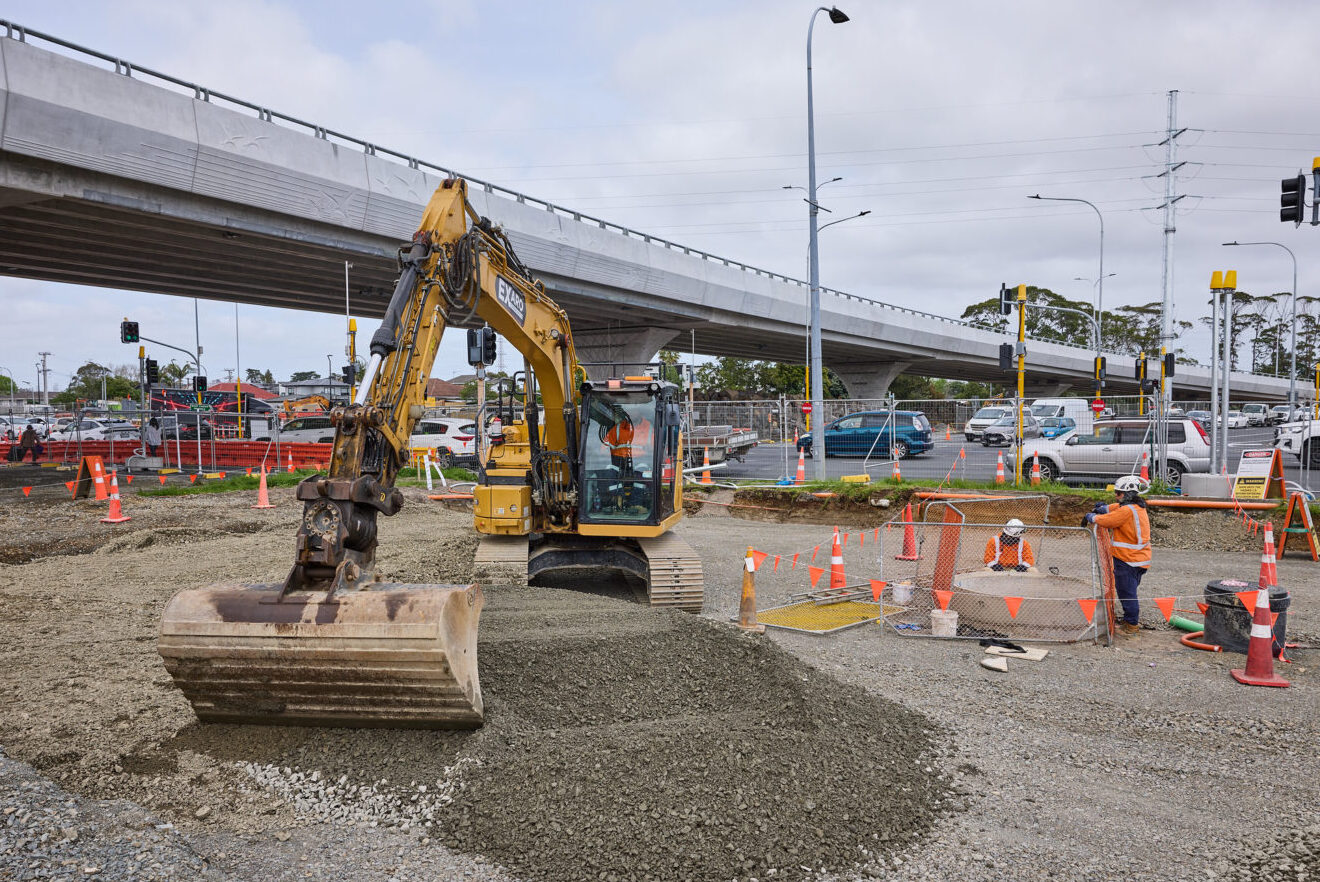
Dyer also raises another speed-limit issue relating to the Eastern Busway on Pakūranga Road.
“Even more absurd is the situation between Ti Rakau Drive and Williams Avenue,” he says. “In the last year, the speed limit on the main road has been increased from 50kph to 60kph, and yet the speed limit on the parallel busway is set at 30kph.
“I’d argue that risks to vehicles and pedestrians are much lower on the busway as it’s only used by professionally trained drivers who can be monitored and controlled by the bus companies.
“Risks are certainly no more than on the main road and so it’s completely illogical to have a much lower limit,” says Dyer.
“I hope the new section of busway parallel to Ti Rakau Drive will have more sensible speed limits applied when it’s opened.”

Tackling intersection issues
AT says a plan to address the Pakūranga Road and flyover “intersection issues is being progressed”.
The Times understands more details about what exactly that plan involves will be released by AT “soon”, including a start date for the works.
And as has previously been reported, planned Eastern Busway summer season construction jobs in the Ti Rakau Drive area are still due to commence on December 27.
“AT and its Eastern Busway project partners are monitoring traffic flows and fine-tuning traffic lights to help, particularly during the afternoon peak,” AT continues to state about the Pakūranga Road and flyover intersection.
“A static sign has been installed to encourage drivers to make full use of all three lanes when turning into Pakūranga Road from the flyover.
“AT will continue to monitor the intersection at Pakuranga Road and the flyover to ensure it works.
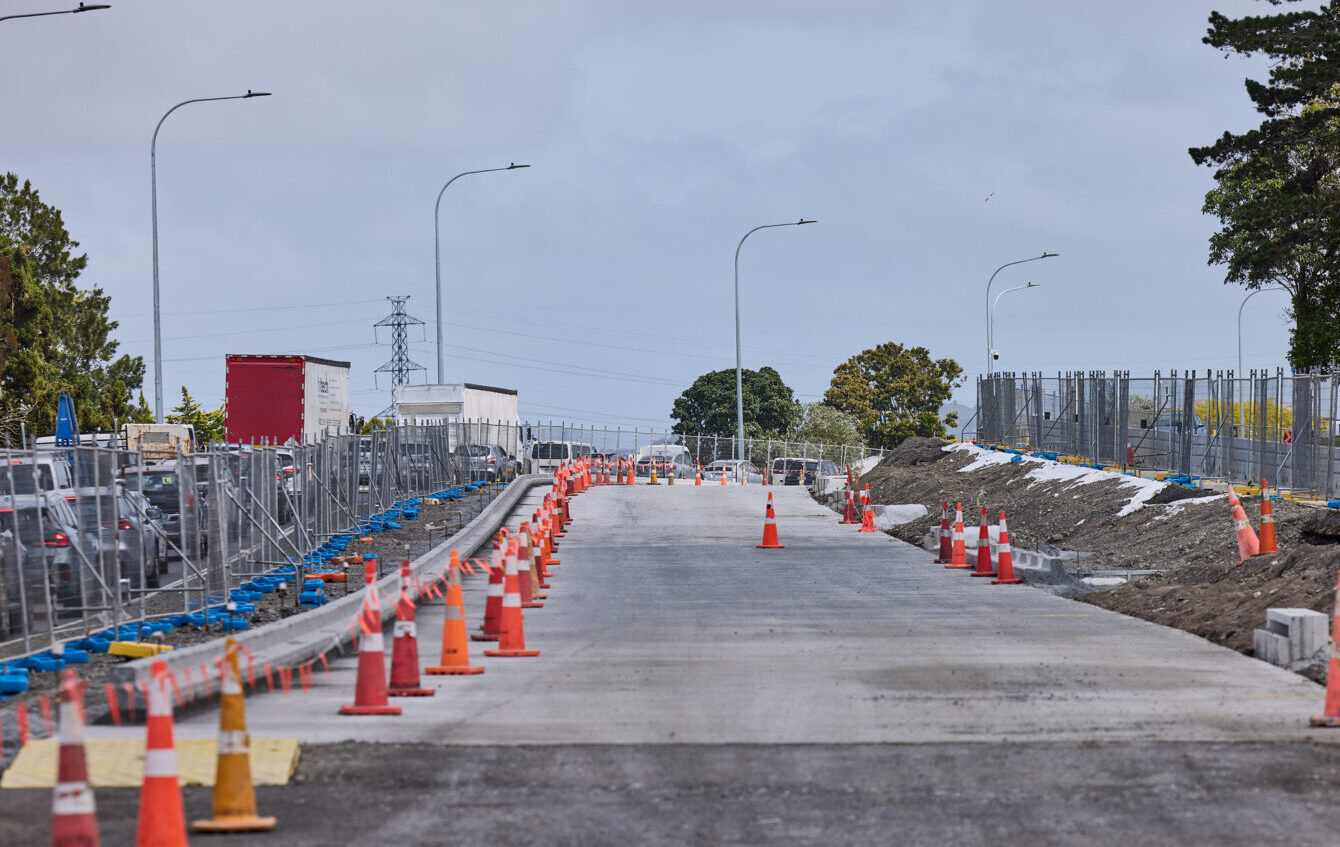
“There continues to be major construction work on the Eastern Busway requiring traffic changes, so variable message signs (VMS) are being moved so drivers know about upcoming lane changes sooner,” says AT.
“We’re also ensuring that digital mapping and navigation apps such as Google Maps are updated and that GPS systems guide drivers to use the flyover instead of showing Panmure as the preferred route.
“Construction is continuing at pace so all major works can end next year, and the busway can open in 2027 – providing rapid public transport that’s reliable.”
AT adds that its upcoming Summer Road Reno programme targets repairing and upgrading 400 kilometres of roads and footpaths over the warmer months.
“This is when the weather is best for road repairs. Last summer we achieved 417kms of road repairs.”
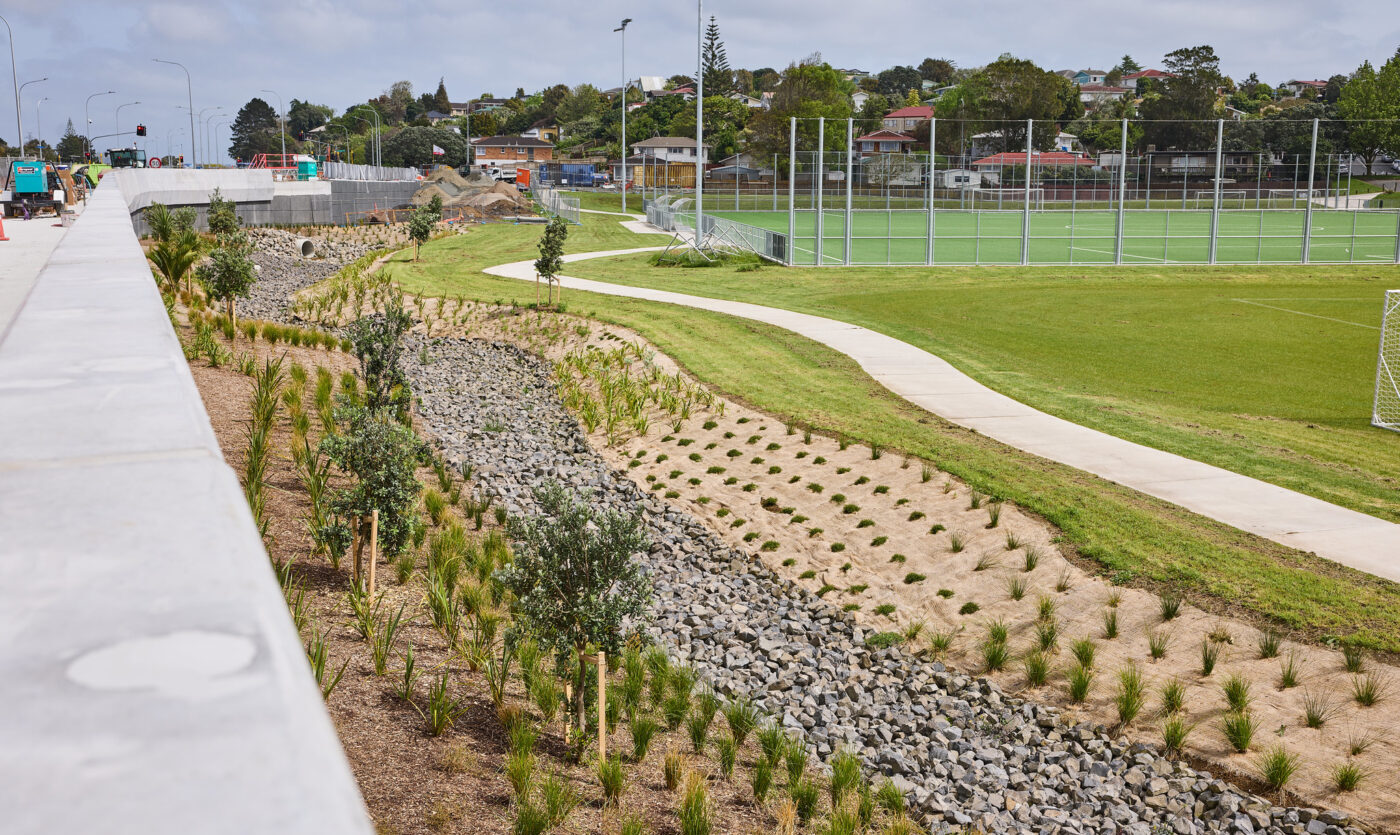
- For recent Times’ stories on te Rā Hihi flyover at Pakūranga, read:
https://www.times.co.nz/business/ra-hihi-builders-receive-industry-accolade/
https://www.times.co.nz/news/flyovers-got-more-names-than-sinatra/
https://www.times.co.nz/business/at-responds-to-outrage-of-motorists/
https://www.times.co.nz/news/full-acceleration-for-ra-hihi-flyover/
https://www.times.co.nz/business/road-disruptions-forecast-for-summer/
https://www.times.co.nz/business/work-ongoing-to-finish-ra-hihi-flyover/
https://www.times.co.nz/business/flyover-opening-marks-major-milestone-in-busway-project/
https://www.times.co.nz/business/a-long-road-to-152m-pakuranga-overpass/
https://www.times.co.nz/business/saluting-flyover-heroes-early-opening-for-new-roadway/
https://www.times.co.nz/local-business/new-photos-released-of-flyovers-progress/
https://www.times.co.nz/news/motorists-warned-to-expect-more-delays-in-pakuranga/
https://www.times.co.nz/business/exclusive-photos-plot-progress-of-ra-hihi-reeves-road-flyover/









